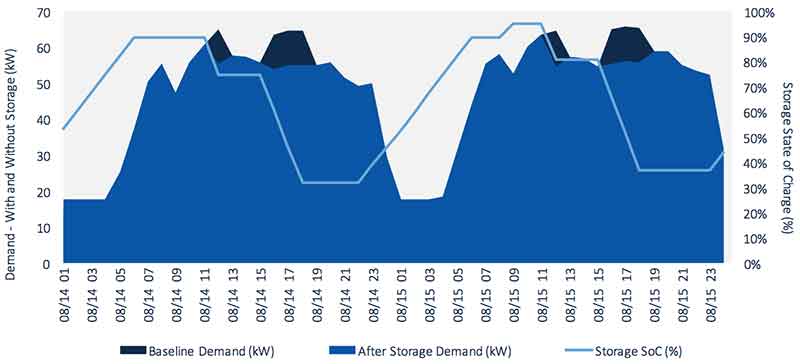BOSTON, July 13, 2016 /PRNewswire/ — In its latest report, The Economics of Commercial Energy Storage in the U.S., GTM Research analyzed rate structures across 51 utilities to determine the opportunity for demand charge management for commercial energy storage customers. According to the report, commercial energy storage economics are attractive today in seven U.S. states, and that number is expected to grow to 19 states by 2021.
U.S. commercial energy storage deployments grew fourteenfold between 2013 and 2015, making it the fastest-expanding segment of the U.S. energy storage market. While that growth rate is very high, it’s important to note that the commercial storage market is expanding off of a small base. Adoption today is limited to a handful of states with local incentives and high retail electricity rates. However, as storage costs continue to decline, more markets will emerge as offering attractive economics.

Commercial energy storage has been the fastest-growing storage segment in the U.S. over the last two years. While the bulk of this growth occurred in California, other markets have started to crop up in recent months, driven in large part by a single value stream – demand charge management. Credit: GTM Research
The report models the internal rate of return (IRR) for 1-hour and 2-hour storage systems for both the small/medium-sized and large commercial customer segments. It found that demand-charge rates of at least $15 per kilowatt per month are necessary to achieve favorable economics for energy storage today. By 2021, commercial storage economics will be favorable for certain utility tariffs with demand charges as low as $11 per kilowatt per month.
Large commercial customers in 17 U.S. states will have an internal rate of return of 5 percent or higher, which GTM Research identifies as “in the money.” For small/medium-sized systems, 14 states will be economically attractive. Taken together, there will be 19 unique states primed for commercial storage adoption in 2021. Under GTM Research’s aggressive cost reduction case, storage costs are forecasted to fall 15 percent annually over the next five years. In this scenario, there could be as many as 26 states where commercial storage is economically attractive.
Energy storage can provide multiple benefits across the grid. However, most of the commercial storage deployed today is used to provide demand-charge-related bill savings.
“In this report, we wanted to provide an outlook for demand-charge-based economics of commercial storage, treating storage as a one-trick pony,” said Ravi Manghani, GTM Research’s director of energy storage and lead author of the report. “In reality, policy and market structures are evolving to help storage owners capitalize on other value streams as well. Effectively, this analysis should be viewed as the floor for commercial storage potential. The results establishing attractive economics in over a third of the states by 2021 is a promising sign for the future of commercial storage in the U.S.”
About GTM Research:
GTM Research, a division of Greentech Media, provides critical and timely market analysis in the form of research reports, data services, advisory services and strategic consulting. GTM Research’s analysis also underpins Greentech Media’s webinars and live events. Our coverage spans the green energy industry, including solar power, grid modernization, energy storage, energy efficiency and wind power.
















Comments